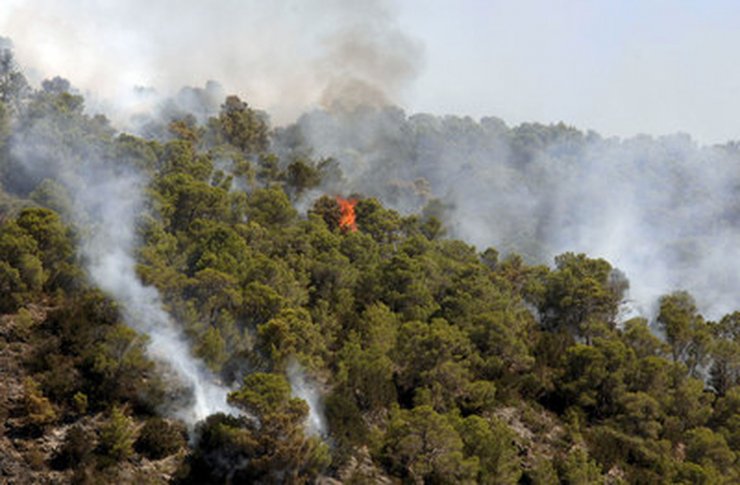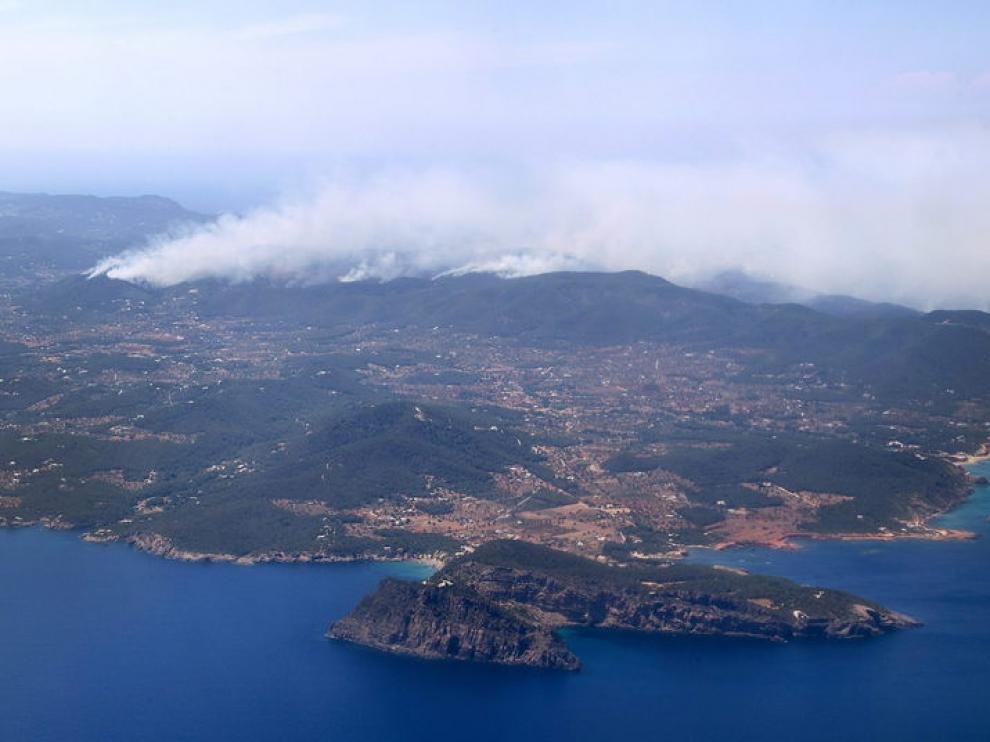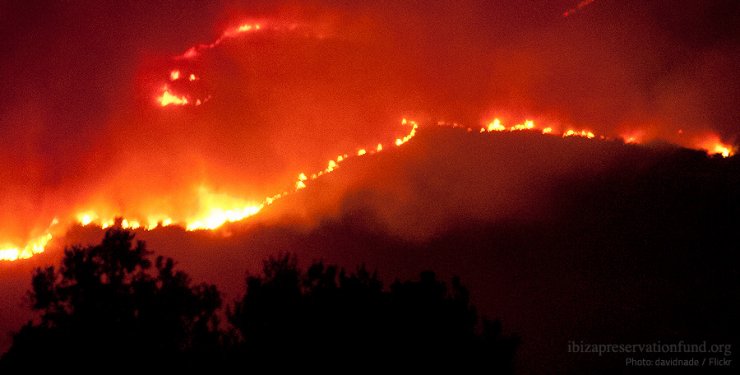Every summer in Ibiza, forest fires break out, some small, some bigger. On this page, we provide an overview of the forest fire situation on Ibiza, look back at several of the biggest fires in the last 15 years, and offer useful advice on how to prevent starting one, what to do if you spot one, and what to do if you find yourself in the path of one.
Fortunately, since 2011, the number, size and effect of forest fires have greatly decreased thanks to more effective controls. Nonetheless, it's still very much a hot topic in Ibiza in the summertime, which is why we offer the following tips.
Forest fires tend to occur during the peak summer months when certain conditions favour them. The term used by firefighters to describe those ideal conditions for a forest fire, is 30/30/30: that's 30 degrees C temperature, 30 kilometres per hour wind and 30% humidity or less.
When it comes to fighting the fire itself, they also point out that Ibiza's hilly landscape makes access very difficult. Whenever a forest fire is in progress, the emergency services dispatch yellow fire spotter aircraft, fire-fighting helicopters and amphibious water bombers, which you may see making their daring descent onto the surface of the sea to refill.

How to prevent forest fires
In the summer months, when the temperatures are at their hottest, many people visit Ibiza's forests to enjoy the shade and cool they offer from the heat. It's a great time of year to have a picnic with friends or family in the countryside or to have a barbecue in the garden of the villa you own or rent.
However, this is precisely when the risk of fire is highest. Follow these tips to ensure you do not accidentally cause a blaze:
- Remember to take all your litter with you and make sure not to leave any flammable materials lying around when you go. Remember that glass and broken glass can start a fire in direct sunlight, as they act like a lens.
- Cigarette butts, whether thrown on the ground or tossed from a car, are a major source of forest fires. Ensure you thoroughly extinguish your cigarette butts and take them home with you, if possible. If you are going to smoke in the countryside, buy a portable ashtray.
- In Spain, it is illegal to light a fire anywhere in mountains, forests or rural areas between May and October. Furthermore, the fines for doing so are high.
- Avoid using machines or tools such as disk cutters and welding machines in rural areas during the summer months.
- If you rent or own a rural property with land attached, clear any long grass or brush that has grown up during the spring so that there is less combustible material.
- Similarly, if you rent or own a rural property, plan your evacuation route and ensure you have an adequate water supply in case of a fire.
What to do if you see a forest fire
If you find yourself in the countryside and you see a forest fire, call 112 – the emergency services number that works throughout Europe - immediately and follow the instructions given.
Taking action if you are in danger
According to forest fire experts, if you are on a mountainside, head downhill and upwind from the fire as the rising heat forest fires create drives them uphill faster. However, if you are on flat or gently sloping ground, you should try to work out where the wind is coming from and go in the opposite direction, provided it doesn't take you in the direction of the fire.
Should I flee the scene or seek refuge?
As stated above, follow the instructions given to you by the emergency authorities.
If you are in your house, the safest thing is to shelter inside it, provided it is not made of wood. Take the following precautions:
- Close the blinds
- Dampen the garden using a hose
- Place towels in door and window cracks
- Keep calm
- Remain in the lowest part of the house until the rescue workers can reach you
People are advised not to flee in their vehicles as cars contain many highly flammable materials, and the roads can easily become blocked, thus impeding access for the firefighters.
Big forest fires on Ibiza
The worst period for forest fires in Ibiza was in the years 2000-2012. That period saw two of the biggest fires that have ever occurred on the island.
Anyone in the vicinity of those events, or even on the island, will have vivid memories of those hugely destructive events.
The Benirrás fire, 2010
In August 2010, a large forest fire broke out in the area of Benirrás beach, close to the village of San Juan in the north of Ibiza. Over 1,500 people, mostly holidaymakers, had to be evacuated by land and sea. The blaze burned over 400 hectares – almost 1,000 acres – of forest covered in pine and juniper trees, taking the firefighters no less than 12 days to put it out.
Local experts from IBANAT, the Balearic Island Nature Institute, described it as an ecological disaster from which the vegetation would take 30 years to recover.
The Morna Valley fire, 2011
In May of the following year, 2011, a huge fire broke out in the Valley of Morna, in the municipality of San Juan. It burned nearly 2,000 hectares – almost 5,000 acres – of forest, led to the evacuation of 230 people and badly damaged 18 houses.
The fire, which burned all the way to the sea some 11 kilometres away, is by far the biggest ever recorded in Ibiza. As it was characterised as a Level 2 fire, that is, one that poses a grave risk to people and property, the regional and national authorities mobilised massive resources to extinguish it.
These included the army's emergency unit, 23 aircraft, over 600 firefighters from as far away as Catalonia and Valencia, and members of the Civil Guard.

